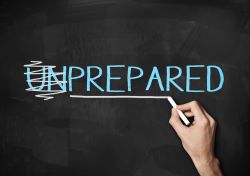Environmental Emergencies Preparedness for Healthcare Practices: Training Staff Members
Laura M. Cascella, MA, CPHRM
Environmental emergencies can occur at any time and any place, and they can have widespread consequences for individuals, businesses, and communities. Natural disasters, severe weather, industrial accidents, chemical and oil spills, and unintentional radiation exposure are all examples of potential environmental emergencies.
For healthcare practices, emergency preparedness for environmental crises is paramount to safeguarding patients, visitors, employees, and others; protecting office infrastructure; minimizing adverse effects; preventing losses; and facilitating recovery efforts.
Inevitably, the value and viability of preparedness efforts hinge on a well-trained staff that is able to quickly and efficiently execute response plans. Without adequate and appropriate training, providers and staff members might be unprepared to recognize potential hazards, manage emerging situations, and mitigate potential risks.
Training for environmental emergencies should address major components of the practice's disaster response plan, such as:
- Staff roles and responsibilities
- Protective actions for life safety
- Response plans based on type of emergency
- Physical and information security
- Crisis communication
- Recovery efforts
Although all employees should receive training on emergency preparedness and response, some individuals — such as the safety coordinator, emergency response leader, and those with significant accountability during emergencies — will benefit from additional training.1
Using a variety of training techniques — such as tabletop exercises, mock drills or simulations, review of actual disaster response efforts, and equipment training — can help providers and staff develop proficiency with emergency processes. For some types of training, such as fire safety, it might be beneficial to involve local emergency responders or authorities.2
The Occupational Safety and Health Administration (OSHA) notes that training should occur during new hire orientation, and retraining should occur at least annually. Further, providers and staff should receive follow-up training when the practice's response plan changes due to "a change in the layout or design of the facility, when new equipment, hazardous materials, or processes are introduced that affect evacuation routes, or when new types of hazards are introduced that require special actions."3
To learn more about training for environmental emergencies, visit Ready.gov's Training and Testing webpage and OSHA Compliance Guidance on Training.
Endnotes
1 Ready.gov. (2023, September 7). Ready business: Employee training. Retrieved from www.ready.gov/business/training/employee-training
2 Occupational Safety and Health Administration. (n.d.). Develop and implement an emergency action plan: Emergency action plan checklist. Retrieved from www.osha.gov/etools/evacuation-plans-procedures/eap/develop-implement/checklists
3 Ibid.

